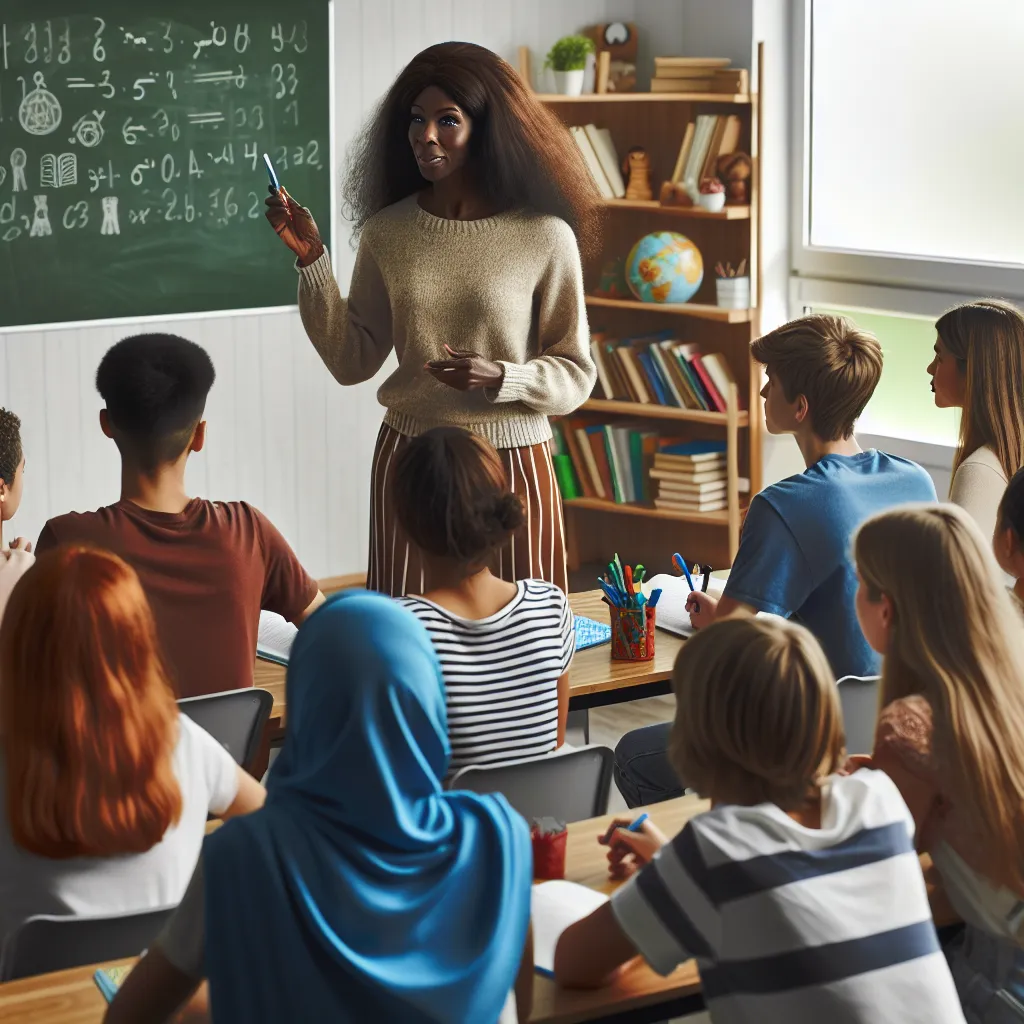Ask AI on The Internet
Question: Use the following link to access the article: https://www.semanticscholar.org/paper/Going-Beyond-One-Size-Fits-All-Image-DescriptionsStangl-Verma/826f50cf33e82dea0b86ecb803d95c6e5c5b0649?utm_source=direct_link: Stangl, A., Verma, N., Fleischmann, K.R., Morris, M.R. and Gurari, D., 2021, October Going beyond one-size-fits-all image descriptions to satisfy the information wants of people who are blind or have low vision. In Proceedings of the 23rd International ACM SIGACCESS Conference on Computers and Accessibility (pp. 1-15). Read the above article and respond to the following questions. Question 1 1.1 Explain to a novice educator on, what does a one size fits all approach mean in teaching. [5] 1.2 Why have some researchers questioned the effectiveness of a one-size-fits-all approach for image descriptions, particularly for people who are blind or visually impaired (BLV)? Provide specific reasons mentioned in the passage to support your answer. 1.3 Explain why adopting a one-size-fits-all approach to teaching is criticised and how it may result in inequality of access, participation, and outcomes for learners. [4] 1.4 Discuss the limitations of current automated techniques for generating image descriptions, as highlighted in the article. Provide evidence from the passage to support your answer. [4] 1.5 Explain the two broad categories of technologies mentioned in the passage, which are used to deliver image descriptions. Provide examples for each category. [6] 1.6 What is the aim of investigating the influence of context on image descriptions for people who are BLV, as mentioned in the passage? Provide examples of context-aware solutions highlighted in the passage and explain how context is utilised to enhance the usefulness of image description. S
I cannot access external websites to read specific content, including the article from the link you provided. However, I can help explain these concepts and answer the questions based on general knowledge and principles related to the topics. Let's address each question one by one. ### Question 1 1.1 **Explain to a novice educator what a "one size fits all" approach means in teaching.** - In teaching, a "one size fits all" approach refers to using the same instructional strategies, materials, and assessments for all students, regardless of their individual needs, abilities, or learning styles. This approach assumes that all learners will benefit equally from the same type of instruction, which can be problematic because it does not account for the diversity in student backgrounds, experiences, and abilities. Essentially, it means applying the same educational methods to everyone without considering individual differences. 1.2 **Why have some researchers questioned the effectiveness of a one-size-fits-all approach for image descriptions, particularly for people who are blind or visually impaired (BLV)? Provide specific reasons mentioned in the passage to support your answer.** - Researchers have questioned the effectiveness of a one-size-fits-all approach for image descriptions for BLV individuals for several reasons: - **Individualized Needs:** BLV users have diverse needs and preferences when it comes to accessing visual information. Some might need detailed descriptions, while others might prefer concise summaries. - **Contextual Relevance:** The specific purpose or context in which the image will be used can greatly influence what information is most relevant. A generic description may not provide the necessary details required for different uses. - **Enhanced Understanding:** Personalized or context-aware descriptions can enhance the user's understanding and engagement with the content by providing meaningful and relevant information. 1.3 **Explain why adopting a one-size-fits-all approach to teaching is criticized and how it may result in inequality of access, participation, and outcomes for learners. [4]** - The one-size-fits-all approach is criticized because it fails to accommodate the diverse needs of students, leading to several negative outcomes: - **Inequality of Access:** Students with different learning styles, abilities, or disabilities may not have equal access to the material, thus hindering their learning process. - **Participation Challenges:** Without considering individual differences, some students may find it difficult to participate in class activities, leading to disengagement and a lack of interaction. - **Disparate Outcomes:** When education is not tailored to meet individual needs, students may not achieve their full potential, resulting in unequal academic outcomes. Tailoring instruction helps ensure that all students have the opportunity to succeed. 1.4 **Discuss the limitations of current automated techniques for generating image descriptions, as highlighted in the article. Provide evidence from the passage to support your answer. [4]** - Some of the limitations of current automated techniques for generating image descriptions include: - **Accuracy Issues:** Automated systems often struggle with accurately identifying and describing complex or nuanced visual content. - **Detail and Relevance:** Automated descriptions may lack the detail or miss relevant information needed by BLV individuals, failing to capture the context or specific aspects that are important for understanding the image. - **Personalization:** Automated techniques generally do not take into account the personal preferences or needs of individual users, resulting in generic descriptions that may not be useful. 1.5 **Explain the two broad categories of technologies mentioned in the passage, which are used to deliver image descriptions. Provide examples for each category. [6]** - The two broad categories of technologies for delivering image descriptions are: - **Pre-Generated Descriptions:** These are descriptions created by humans or automated systems before they are needed. Examples include alt-text for web images and captions for photographs in books. - **Real-Time Descriptions:** These are descriptions generated on the spot, such as live audio descriptions provided during events or by using AI-based applications that describe surroundings through a camera in real-time, like apps designed for BLV individuals. 1.6 **What is the aim of investigating the influence of context on image descriptions for people who are BLV, as mentioned in the passage? Provide examples of context-aware solutions highlighted in the passage and explain how context is utilized to enhance the usefulness of image description.** - The aim of investigating the influence of context on image descriptions for people who are BLV is to improve the relevance and usability of image descriptions by tailoring them to specific situations or user needs. Context-aware solutions can adapt the information they provide based on the user's current context. - **Examples of Context-Aware Solutions:** - **Adaptive Descriptions:** Systems that adjust the level of detail in descriptions based on the user's preferences or the specific task they are engaged in. - **Semantic Understanding:** Technologies that provide more meaningful descriptions by understanding the scenario (e.g., describing a cooking scene differently for a professional chef versus a novice). - **Utilizing Context:** By incorporating context such as the user's current activity, environment, or personal preferences, these solutions can provide more accurate, relevant, and actionable image descriptions that better support the needs of BLV individuals. These answers provide a comprehensive overview based on the principles and known methodologies related to the subjects mentioned. If you have access to the specific article or excerpts from it, it will be beneficial to cross-reference and enrich these points accordingly.
Think your answer is better than the AI's? Post it below.
Other Most Relevant Posts:
 # Tutorial Letter: Assignment 05 - Incl. Education Approaches (IEA1501)
# Declaration of Honesty
# Assignment 05 Questions
# Inclusive Pedagogical Approaches
# Teaching Strategies for Incl. E
# Tutorial Letter: Assignment 05 - Incl. Education Approaches (IEA1501)
# Declaration of Honesty
# Assignment 05 Questions
# Inclusive Pedagogical Approaches
# Teaching Strategies for Incl. E
Question Tags
If you want your question answered by an AI, click here.






Post your own comment: